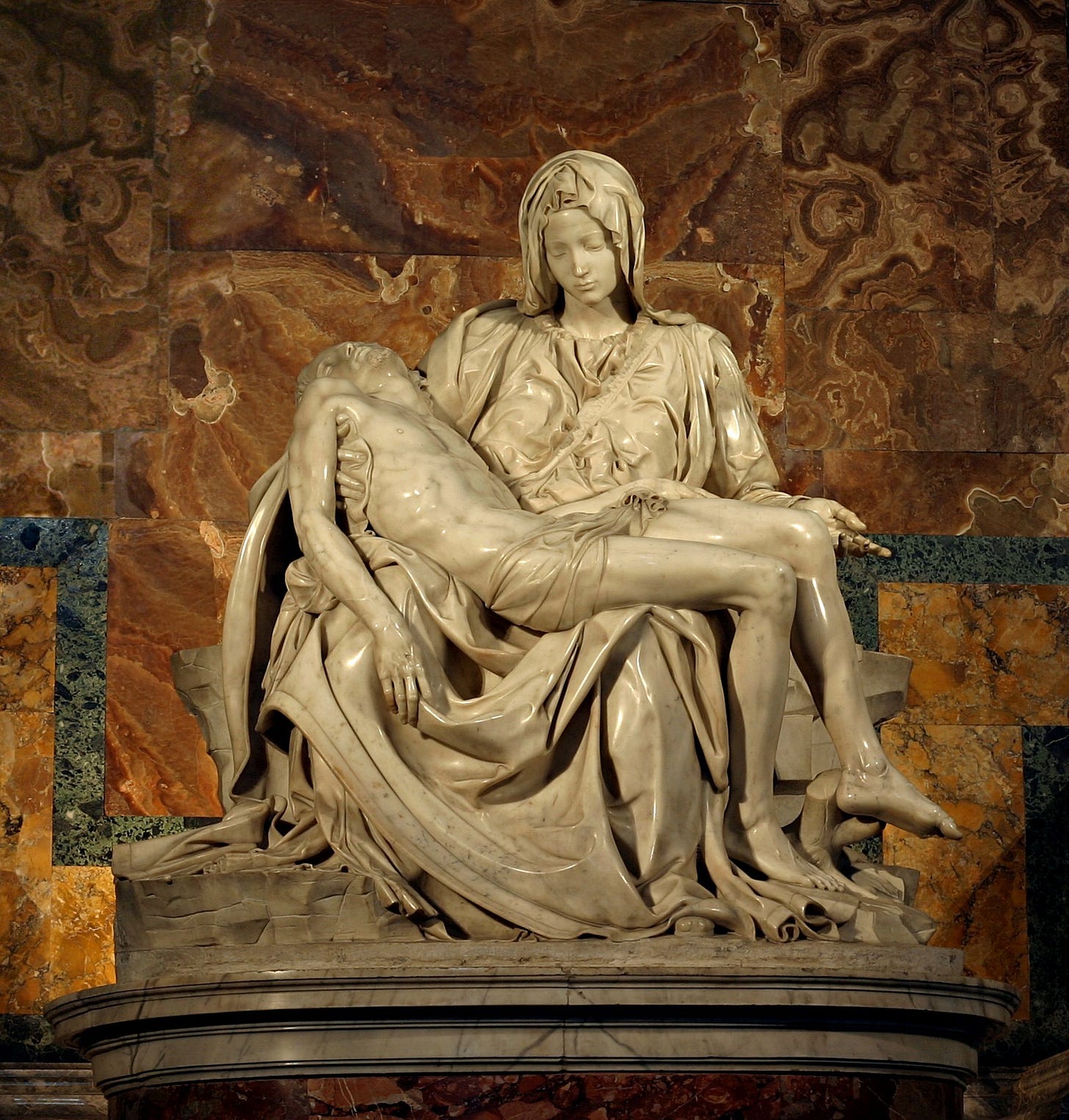Inside Michelangelo’s Most Personal Masterpieces
The most beautiful works in history came from a man who could never escape the beast inside him. Michelangelo didn’t just carve stone, he carved himself into history.
Table of Content
Beauty and the Beast by Endless Days of Summer
Michelangelo Never Wanted to be an Architect by Culture Explorer
Traveling to the Sagrestia Nuova by Culture Explorer
Companion Piece — The Drama Behind the Stone by Culture Explorer
Food - Castagnaccio Recipe by Endless Days of Summer
Beauty And The Beast
When genius is holy suffering, beauty is both torment and grace.
By Endless Days of Summer
The drape fell, sweeping the stone in a gentle hush, revealing what lay beneath.
Cardinal Jean de Bilhères did not move. No one did. The light filtering down from the high windows made the marble seem revealed, not carved.
The cardinal stepped forward, the echo of his boots lost in the vaulted chamber. For a moment, he couldn’t speak. His lips parted, but no words came. It wasn’t awe. It was something deeper, something sacred.
He had commissioned this. But what stood before him was not a statue. It was something else. Something neither alive nor dead, held in the stillness between breath and eternity.
The marble was pale, almost glowing in the half-light of the studio. Mary sat, impossibly young, carved with such softness that her skin looked tender to the touch. In her arms lay the lifeless body of Christ, his ribs gently rising and falling in stone, as though his final breath still lingered somewhere between her hands.
This was not the work of a boy. And yet Michelangelo was only twenty-four.



